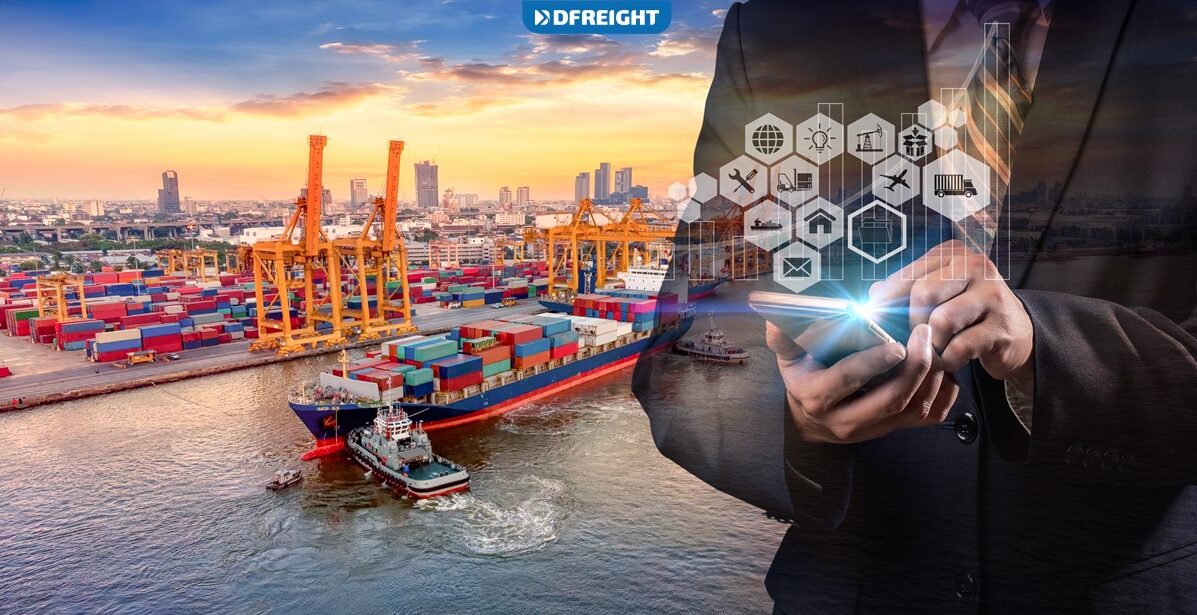Smart shipping is the new trend that is remarkably revolutionizing the world of logistics and supply chain management. It can contribute massively to reduced environmental impact, improved efficiency, enhanced communication, and ultimately reduced costs. By using alternative fuels, more fuel-efficient vehicles, and cutting-edge technology to track and optimize shipping routes, smart shipping is redefining the freight forwarding industry. If you’re curious to know more about the method, read on to get enlightened on the history, substantial benefits, and challenges of smart shipping and how it can positively impact the realm of international shipping.
Table of Contents
An Overview of Smart Shipping
Smart shipping is the new shipping method that is taking the world by storm. This method is faster, more efficient, and much more convenient than the traditional shipping method. With this transforming shipping method, you can track your package in real-time, receive updates on its location, and even have it delivered to your doorstep. The best part about it is that it is completely hassle-free. You no longer have to worry about missed deliveries or lost packages. With smart shipping, your package will always be safe and sound.
The History of Smart Shipping
In the late 1990s, e-commerce was in its infancy and the shipping industry was still largely reliant on paper-based processes. This began to change with the advent of the first generation of Shipping Execution Systems (SES) in the early 2000s. These systems were designed to streamline the process of shipping goods by automating the generation of shipping documents and labels.
However, the real game-changer for the shipping industry came with the introduction of the second generation of SES, which added the ability to track and trace shipments in real-time. This was a major breakthrough for the industry, as it allowed for greater visibility and transparency of the shipping process.
Today, the shipping industry is undergoing another major transformation with the introduction of smart logistics. It is a new breed of shipping execution system that takes advantage of the latest advances in technology, such as the Internet of Things (IoT), big data, and artificial intelligence (AI).
Smart shipping systems are designed to provide an end-to-end view of the shipping process, from the moment an order is placed to the moment it is delivered. By incorporating IoT devices, such as sensors and RFID tags, smart systems are able to track shipments in real-time and provide valuable insights into the shipment’s progress.
In addition, these systems make use of big data and AI to provide predictive analytics that can help shippers avoid potential problems, such as delays or lost shipments. By harnessing the power of these technologies, smart shipping systems are revolutionizing the shipping industry and making it more efficient and effective than ever before.
The Benefits of Smart Shipping
Smart shipping is an initiative that promotes the use of technology and data to improve the efficiency of the shipping industry. The goal of this tech-driven shipping method is to reduce the environmental impact of shipping, while also improving the efficiency of the industry and making it more sustainable. There are many benefits, including:
Reduced Environmental Impact
By using smart shipping methods, companies can reduce their reliance on traditional shipping methods which can have a negative impact on the environment. Smart shipping can help reduce the environmental impact of shipping by using cleaner and more efficient engines, using more efficient routing, and reducing the amount of time that ships spend in port, which can help reduce emissions. It can also help sustainable shipping by using more efficient packaging, which can help reduce the amount of waste that is produced by shipping.
Improved Efficiency
By definition, efficiency is a measure of the use of resources to achieve desired outcomes. When it comes to shipping, efficiency can be improved in a number of ways. For example, it can help to optimize routes, reduce waste, and streamline operations. In addition, improved efficiency can also help to improve customer satisfaction by ensuring that orders are delivered on time and in good condition.
Enhanced Communication
By using technology to streamline communication and connect all stakeholders, smart shipping can provide a number of benefits, including improved communication. In the past, the transportation and logistics industry has been notoriously siloed, with little communication between different stakeholders. This has often led to errors, delays, and other problems. However, smart shipping uses technology to connect all stakeholders, allowing for improved communication. Improved communication can help to avoid errors and delays by ensuring that everyone is on the same page. It can help to improve customer service by providing customers with real-time updates on their shipments.
Reduced Costs
A great benefit of smart shipping is the reduced costs that it can bring about for businesses. This is because it can help to optimize a company’s shipping process, making it more efficient and thus leading to lower costs. In addition, smart methods can also help to reduce the need for physical inventory planning, as well as the associated costs, since they can provide real-time visibility into a company’s shipping process. Finally, smart shipping can also help to automate the shipping process, which can further reduce costs.
Different Types of Smart Shipping
There are many types of smart shipping, but some of the most popular include:
1. Automated Shipping: This type of shipping uses sensors and software to automate the shipping process. This can include things like automatically routing shipments, tracking inventory, and sending notifications when a shipment is ready to be picked up.
2. Connected Shipping: This type of shipping uses IoT devices to connect different parts of the shipping process. This can include things like tracking packages in real-time, monitoring environmental conditions, and sending alerts when there are delays.
3. Green Shipping: This type of shipping focuses on making the shipping process more environmentally friendly. This can include things like using recycled materials, using alternative fuels, and reducing emissions.
4. Last Mile Shipping: This type of shipping focuses on optimizing the last mile of the shipping process. This can include things like using electric vehicles, drones, and local delivery services.
Challenges of Smart Shipping
There are a few different challenges that come with smart shipping. One challenge is that it can be difficult to find shipping methods that are truly environmentally friendly. Another challenge is that these methods can sometimes be more expensive than traditional shipping methods.
Despite these challenges, it is a great option for companies that are looking to reduce their environmental impact and save money in the long run. Smart shipping methods are constantly evolving and becoming more accessible, making it easier for companies to make the switch to a more sustainable shipping method.
The Impact of Smart Shipping on Ocean Freight
In the modern world, it is essential for businesses to move their products quickly and efficiently in order to remain competitive. This is especially true for businesses that rely on international trade, as they must often ship their goods across great distances. Ocean freight forwarding is a vital service that helps businesses to transport their products by sea. Smart shipping is changing the way that ocean freight is being shipped.
By using alternative fuels, more fuel-efficient vehicles, and technology to track and optimize shipping routes, smart logistics can help to reduce emissions, save energy, and reduce costs. Ocean freight is a major contributor to global emissions, so the use of smart methods can help to make a significant impact. Overall, it is a powerful tool that can help businesses improve their ocean freight forwarding.
How to Get Started?
If you’re interested in using smart shipping methods for your company, there are a few things you can do to get started. First, research different smart shipping methods and find one that would work best for your company. Then, contact a shipping provider that offers such services and get a quote. Finally, make the switch to smart shipping and start enjoying the benefits!
DFreight is a company that specializes in smart shipping and digital freight forwarding. Through its smart shipping methods, DFreight can streamline your logistics and supply chain, reducing costs and saving time. DFreight’s digital platform allows you to track your shipments and receive real-time updates on their status, so you can always know where your freight is and when it will arrive.
What is smart shipping?
It is a type of shipping that uses technology to track shipments and optimize delivery routes. This can help businesses save time and money by ensuring that shipments are delivered as quickly and efficiently as possible.
What are the benefits of smart shipping?
There are many benefits of smart shipping, including reduced environmental impact, improved efficiency, improved communication, and reduced costs.
What are the different types of smart shipping?
Some of the most popular types of smart shipping include automated shipping, connected shipping, green shipping, and last mile shipping.
What are the challenges of smart shipping?
One challenge is that it can be difficult to find shipping methods that are truly environmentally friendly. Another challenge is that smart shipping methods can sometimes be more expensive than traditional shipping methods.
How can I get started with smart shipping?
First, research different smart shipping methods and find one that would work best for your company. Then, contact a shipping provider that offers such services and get a quote. Finally, make the switch to smart shipping and start enjoying the benefits!














